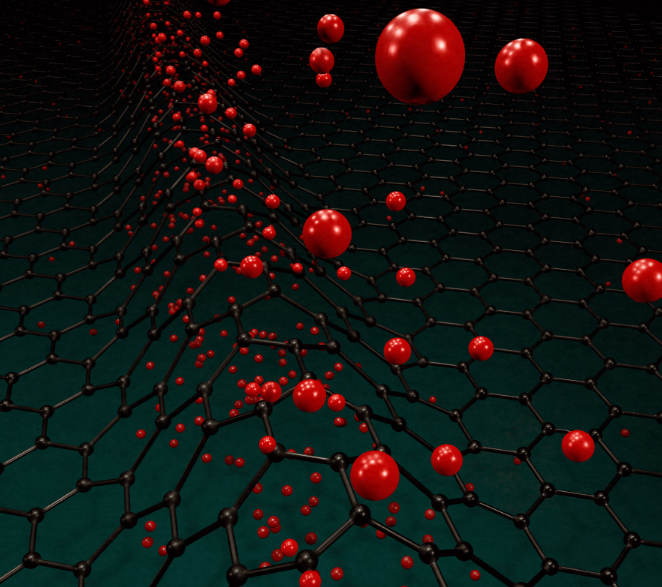Researchers from the Universities of Warwick and Manchester have managed to solve the long-standing mystery of why graphene is so much more permeable to protons than theory predicts.

Image Credit: The University of Manchester
A decade ago, researchers from The University of Manchester revealed that graphene is permeable to protons, the nuclei of hydrogen atoms.
Since theory postulated that it would take billions of years for a proton to pass through graphene's dense crystalline structure, the unexpected result sparked a debate in the community. This led to the speculation that protons enter the crystal lattice through pinholes rather than the lattice itself.
Now, a team from the University of Warwick, guided by Prof. Patrick Unwin, and The University of Manchester, directed by Dr. Marcelo Lozada-Hidalgo and Prof. Andre Geim, reveal ultra-high spatial resolution measurements of proton transport through graphene and demonstrate that perfect graphene crystals are permeable to protons. Protons are unexpectedly expedited around nanoscale wrinkles and ripples in the crystal.
The study was published in the journal Nature, and could offer a significant boost to the hydrogen economy.
Expensive catalysts and membranes, which can have a significant environmental impact, are currently used to generate and use hydrogen. These could be substituted with more sustainable 2D crystals, lowering carbon emissions and contributing to Net Zero through green hydrogen generation.
To quantify minute proton currents obtained from nanometer-sized areas, the researchers used a method called scanning electrochemical cell microscopy (SECCM). Using this technique, they could see the spatial distribution of proton currents through graphene membranes.
If proton transport occurred through holes, as some researchers hypothesized, currents would be concentrated in a few isolated locations. There were no isolated spots found, ruling out the presence of holes in the graphene membranes.
“We were surprised to see absolutely no defects in the graphene crystals. Our results provide microscopic proof that graphene is intrinsically permeable to protons,” stated Dr. Segun Wahab and Dr. Enrico Daviddi, Leading Authors of the paper.
Proton currents were noticed to be accelerated around nanometre-sized wrinkles in the crystals, which was unexpected. The wrinkles effectively “stretch” the graphene lattice, offering a large space for protons to permeate through the pristine crystal lattice, according to the researchers. This observation now ties the experiment and theory together.
We are effectively stretching an atomic scale mesh and observing a higher current through the stretched interatomic spaces in this mesh—this is truly mind-boggling.
Dr. Lozada-Hidalgo, The University of Manchester
“These results showcase SECCM, developed in our lab, as a powerful technique to obtain microscopic insights into electrochemical interfaces, which opens up exciting possibilities for the design of next-generation membranes and separators involving protons,” Prof. Unwin notes.
The researchers are thrilled about the discovery's potential to enable new hydrogen-based technologies.
Exploiting the catalytic activity of ripples and wrinkles in 2D crystals is a fundamentally new way to accelerate ion transport and chemical reactions. This could lead to the development of low-cost catalysts for hydrogen-related technologies.
Dr. Lozada-Hidalgo, The University of Manchester
Journal Reference:
Wahab, O. J., et al. (2023). Proton transport through nanoscale corrugations in two-dimensional crystals. Nature. doi.org/10.1038/s41586-023-06247-6.